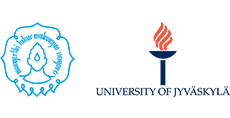Analisis Persepsi Mahasiswa Terhadap Ketidakjujuran Akademik : Studi Kasus di Fakultas Teknik UNS
Abstract
Keywords
Full Text:
PDFReferences
style='mso-element:field-begin;mso-field-lock:yes'>ADDIN Mendeley
Bibliography CSL_BIBLIOGRAPHY Ahmad, S., Islam, M., & Amin, M. (2020). A Study of Pakistani Students’ Perceptions about Academic Dishonesty at University Level. Journal of Research & Reflections in Education (JRRE), 14(1), 81–92. https://doi.org/doi.org/10.1108/09513541011080020
Akbulut, Y., Şendaǧ, S., Birinci, G., Kiliçer, K., Şahin, M. C., & Odabaşi, H. F. (2008). Exploring the types and reasons of Internet-triggered academic dishonesty among Turkish undergraduate students: Development of Internet-Triggered Academic Dishonesty Scale (ITADS). Computers and Education, 51(1), 463–473. https://doi.org/10.1016/j.compedu.2007.06.003
Ambrose, Bridges, Dipietro, & Lovett. (2006). Compact planar monopole antenna with ground branch for GSM/DCS/PCS/IMT2000 operation. In Microwave and Optical Technology Letters (Vol. 48, Issue 4). https://doi.org/10.1002/mop.21454
Arhin, A. O., & Jones, K. A. (2009). A multidiscipline exploration of college students’ perceptions of academic dishonesty: Are nursing students different from other college students? Nurse Education Today, 29(7), 710–714. https://doi.org/10.1016/j.nedt.2009.03.001
Awosoga, O., Nord, C. M., Varsanyi, S., Barley, R., & Meadows, J. (2021). Student and faculty perceptions of, and experiences with, academic dishonesty at a medium-sized Canadian university. International Journal for Educational Integrity, 17(1), 1–27. https://doi.org/10.1007/s40979-021-00090-w
Beasley, E. M. (2014). Students Reported for Cheating Explain What They Think Would Have Stopped Them. Ethics and Behavior, 24(3), 229–252. https://doi.org/10.1080/10508422.2013.845533
Blau, I., & Eshet-Alkalai, Y. (2017). The ethical dissonance in digital and non-digital learning environments: Does technology promotes cheating among middle school students? In Computers in Human Behavior (Vol. 73). Elsevier Ltd. https://doi.org/10.1016/j.chb.2017.03.074
Daumiller, M., & Janke, S. (2019). The Impact of Performance Goals on Cheating Depends on How Performance Is Evaluated. 5(4), 1–10. https://doi.org/10.1177/2332858419894276
Etgar, S., Blau, I., & Eshet-Alkalai, Y. (2019). White-collar crime in academia: Trends in digital academic dishonesty over time and their effect on penalty severity. Computers and Education, 141(September 2018), 103621. https://doi.org/10.1016/j.compedu.2019.103621
Gottardello, D., & Karabag, S. F. (2022). Ideal and actual roles of university professors in academic integrity management: a comparative study. Studies in Higher Education, 47(3), 526–544. https://doi.org/10.1080/03075079.2020.1767051
Harding, T. S., Mayhew, M. J., Finelli, C. J., & Carpenter, D. D. (2007). The theory of planned behavior as a model of academic dishonesty in engineering and humanities undergraduates. Ethics and Behavior, 17(3), 255–279. https://doi.org/10.1080/10508420701519239
Hendy, N. T., & Montargot, N. (2019). Understanding Academic dishonesty among business school students in France using the theory of planned behavior. International Journal of Management Education, 17(1), 85–93. https://doi.org/10.1016/j.ijme.2018.12.003
Lord Ferguson, S., Flostrand, A., Lam, J., & Pitt, L. (2022). Caught in a vicious cycle? Student perceptions of academic dishonesty in the business classroom. International Journal of Management Education, 20(3), 100677. https://doi.org/10.1016/j.ijme.2022.100677
McCabe, D. (2005). It Takes a Village: Academic Dishonesty & Educational Opportunity. Liberal Education, 91(3), 26–31.
McCabe, D. L., Treviño, L. K., & Butterfield, K. D. (2001). Cheating in academic institutions: A decade of research. Ethics and Behavior, 11(3), 219–232. https://doi.org/10.1207/S15327019EB1103_2
Miller, A., Shoptaugh, C., & Wooldridge, J. (2011). Reasons not to cheat, academic-integrity responsibility, and frequency of cheating. Journal of Experimental Education, 79(2), 169–184. https://doi.org/10.1080/00220970903567830
Minarcik, J., & Bridges, A. J. (2015). Psychology Graduate Students Weigh In: Qualitative Analysis of Academic Dishonesty and Suggestion Prevention Strategies. Journal of Academic Ethics, 13(2), 197–216. https://doi.org/10.1007/s10805-015-9230-x
Murdock, T. B., Anderman, E. M., & Murdock, T. B. (2006). Motivational Perspectives on Student Cheating : Toward an Integrated Model of Academic Dishonesty Motivational Perspectives on Student Cheating : Toward an Integrated Model of Academic Dishonesty. Taylor & Francis, 41(October 2014), 37–41. https://doi.org/10.1207/s15326985ep4103
Nelson, M. F., James, M. S. L., Miles, A., Morrell, D. L., & Sledge, S. (2017). Academic Integrity of Millennials: The Impact of Religion and Spirituality. Ethics and Behavior, 27(5), 385–400. https://doi.org/10.1080/10508422.2016.1158653
Odabaşi, H. F., Birinci, G., Kılıçer, K., Şahin, M. C., Akbulut, Y., & Şendaǧ, S. (2007). Bilgi İletişim Teknolojileri ve İnternet ’ le Kolaylaşan Akademik Usulsüzlük Academic Dishonesty. Anadolu Üniversitesi Sosyal Bilimler Dergisi, 7(1), 503–518.
Pavela, G. (1993). Applying the power of association on campus: A model code of academic integrity. Law and Policy, 24(1), 1–22. http://www.academicintegrity.org/icai/assets/model_code.pdf
Rezanejad, A., & Rezaei, S. (2013). Academic Dishonesty at Universities: The Case of Plagiarism Among Iranian Language Students. Journal of Academic Ethics, 11(4), 275–295. https://doi.org/10.1007/s10805-013-9193-8
Şendaǧ, S., Duran, M., & Robert Fraser, M. (2012). Surveying the extent of involvement in online academic dishonesty (e-dishonesty) related practices among university students and the rationale students provide: One university’s experience. Computers in Human Behavior, 28(3), 849–860. https://doi.org/10.1016/j.chb.2011.12.004
Simkin, M. G., & McLeod, A. (2010). Why do college students cheat? Peabody Journal of Education, 15(1), 15–17. https://doi.org/10.1080/01619563709535395
Simon, C. A., Carr, J. R., Mccullough, S. M., Morgan, S. J., Oleson, T., & Ressel, M. (2004). Gender, student perceptions, institutional commitments and academic dishonesty : who reports in academic dishonesty cases ? 29(1). https://doi.org/10.1080/0260293032000158171
Stone, T. H., Jawahar, I. M., & Kisamore, J. L. (2009). Using the theory of planned behavior and cheating justifications to predict academic misconduct. Career Development International, 14(3), 221–241. https://doi.org/10.1108/13620430910966415
Tabsh, S. W., Abdelfatah, A. S., & Kadi, H. A. El. (2017). Engineering students and faculty perceptions of academic dishonesty. https://doi.org/https://doi.org/10.1108/QAE-03-2017-0005
Teodorescu, D., & Andrei, T. (2009). Faculty and peer influences on academic integrity: College cheating in Romania. Higher Education, 57(3), 267–282. https://doi.org/10.1007/s10734-008-9143-3
Thomas, D. (2017). Factors That Explain Academic Dishonesty Among University Students in Thailand. Ethics and Behavior, 27(2), 140–154. https://doi.org/10.1080/10508422.2015.1131160
font-family:"Times New Roman",serif;mso-fareast-font-family:SimSun;mso-ansi-language:
EN-US;mso-fareast-language:EN-US;mso-bidi-language:AR-SA'>
style='mso-element:field-end'>
Refbacks
- There are currently no refbacks.







